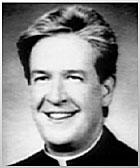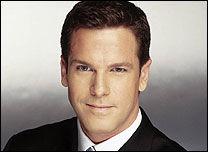|
Multi-Generational Incest in the Catholic Church
By Leon J. Podles
A significant portion of sexual abusers of boys in the Catholic Church – I would estimate half – fall into the pattern of multigenerational incest. One case which I witnessed from various angles over forty years exemplifies this pattern. In 1964 I entered Calvert Hall College High School in Baltimore, an all-boys’ school. So did Jeff (Jerome) Toohey. He was not in the advanced class, so I did not know him well, but we had many mutual acquaintances. After high school Toohey entered the seminary for the archdiocese of Baltimore. He studied at St. Mary’s Seminary in Roland Park, near where I live. At that time Richard Sipe, a psychologist and later an expert in clerical sexual abuse, was teaching there. Years later Sipe told me that he witnessed Toohey being seduced by a member of the seminary faculty. The faculty member, whose name Sipe never told me, told Toohey that he had to get in touch with his sexuality etc. Toohey succumbed. Toohey was ordained and eventually was appointed chaplain of Calvert Hall College High School and moderator of the swim team. Toohey’s proclivities were suspected by his former classmates, and there were Calvert Hall yearbooks showing Toohey with the Speedo-clad members of the swim team, annotated with hilarious and obscene comments. (Toohey was also a chaplain to the deaf, who are prime targets of abuse, for obvious reasons – I had cases involving them.) In the late 1980s or early 1990s, I attended a lecture by Raymond Brown in the chapel at St. Mary’s Seminary. Behind me were sitting a faculty member and a Presbyterian ministress from Govans Presbyterian. She said that she wanted to study Celtic Spirituality, and did they have anyone on the faculty who knew about that. Yes, replied the faculty member, we had a priest who knows about that, but he insisted on sleeping with students and flaunting it too openly. He was sent to a rural parish in western Pennsylvania to cool off, but he would be back. Around that time a friend of mine, another former Calvert Hall student, was working in an office and met a single mother. They talked, and it turned out that she had a son in Calvert Hall. She said that the chaplain there, Father Toohey, was concerned that her son lacked a male role model and that the son should come to live with him. My friend said, do not ask questions, but under no circumstances allow your son to live with Toohey. The mother said that the proposal had made her uncomfortable. In early 1993 Michael Goles publicly accused the popular Father Toohey of having abused him at Calvert Hall; Goles was roundly attacked by the Calvert Hall community and the Catholic laity. A parishioner of St. John’s, Long Green, Bill Loeffler, said “This is a lie…. The real victim is Father Jeff because he will never recover from this.” Then, in 2004, Michael Goles, who remained troubled and unvindicated, got a phone call from someone who had just come forward with similar allegations. The second man, CNN Headline News anchor Thomas Roberts, was also a Toohey victim. He was believed. In 2006 Toohey pleaded guilty to abusing Roberts and was sentenced to five years in prison, but served less than 10 months before being released into home detention. In 2007 Thomas Robert told his story:
This was the pattern that McCarrick followed. He abused seminarians, and then at least one of them abused a boy. When priests initiated seminarians into homosexual activity, the seminarians learned that this was the way that priests were allowed to deal with their sexual desires. They in turn sought out physically mature but emotionally vulnerable teenagers. Some of them entered seminaries, and the pattern continued. How is it possible to break this pattern of multigenerational incest? In 2005 Cardinal O’Brien conducted an apostolic visitation of seminaries because of widespread complaints, but it was a joke. He asked, Anything wrong here? No, everyone replied, nothing wrong. From the toleration that was extended to McCarrick over decades, it is clear that the hierarchy, including perhaps the pope, do not regard the sexual abuse of adult seminarians as a serious matter. Or perhaps McCarrick’s behavior was considered unremarkable and normal. Even if a seminary is cleaned up, there will always be the possibility of corrupt priests returning to the faculty If priests have to be educated in seminaries, why does the faculty have to be priests? There are many competent, married laymen and deacons of good character with theology, history, music, and psychology degrees. Priests are ordained to minister to the laity, not to other priests. Laity are the best judges of whether a seminarian is suitable to be a priest, although a bishop must make the decision about ordination and take the ultimate responsibility. I think this change, which would not, as far as I know, require any change in canon law, would break the cycle of multigenerational abuse. There are other sources of abuse, but I think that the seminaries have been responsible for much, if not most , of the abuse.
|
.
Any original material on these pages is copyright © BishopAccountability.org 2004. Reproduce freely with attribution.

